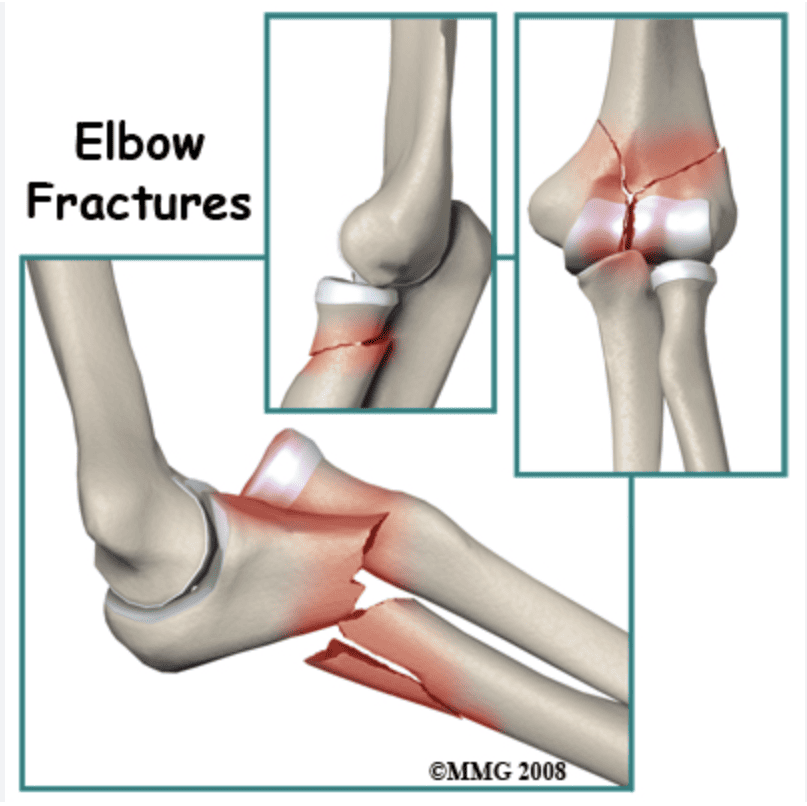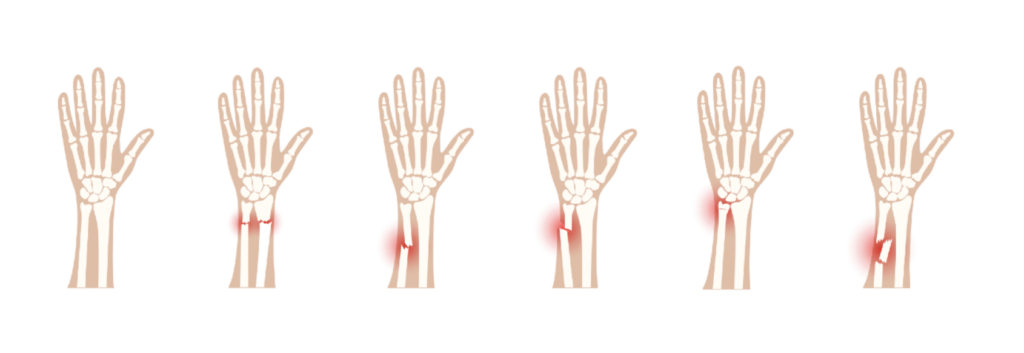Fractures heal within 3 to 12 weeks, depending on fracture type and location. Finger fractures average between 3-4 weeks of healing time. In contrast, wrist and elbow fractures average 6 to 12 weeks for a full recovery.
If you have sustained an injury and suspect a fracture, don’t hesitate to contact our office or seek treatment at the nearest medical facility.


Various types of fractures require different treatment options. Fractures must be treated as soon as possible to provide the best recovery outcome. Once verified that your injury doesn’t require initial surgery, your provider will provide a splint, brace, or cast to stabilize the fracture allowing the bones to fuse back together and heal correctly.
Fractures are painful and accompanied by swelling, bruising, and initial numbness. While the symptoms may last for several weeks, you should steadily improve. If you feel that you have no decrease in pain or swelling, please contact our office, as you may need another evaluation to assess why your fracture may not be healing as it should.

Home Care
- directed and do not remove until instructed by your provider. If casted, keep the cast dry.
- Keep your arm elevated above your heart to reduce pain and swelling.
- Apply ice or cold packs for 15-20 minutes every 2 hours until the swelling subsides (this may take a few days). **Please apply a towel or thin cloth between your body and the ice pack to keep the area dry.
- If prescribed pain medications, please take them as prescribed. Missing doses allow the pain to become uncontrolled and will be harder to control. If pain medications aren’t prescribed, over-the-counter (OTC) medicines may be used to manage the pain. Please talk to your provider or local Pharmacists to discuss OTC options. Set alarms to wake up at night to remain on your medication schedule.
Contact Us at 844-919-4363 or a Medical Facility if:
- The pain gets worse or is uncontrolled with OTC or prescribed pain medications.
- You experience tingling or numbness that’s worse than the initial incident.
- Exhibit signs of infection such as warmth, redness, red streaks leading from the area, pus or drainage, swollen lymph nodes in the neck, armpits, or groin.
- Fever

